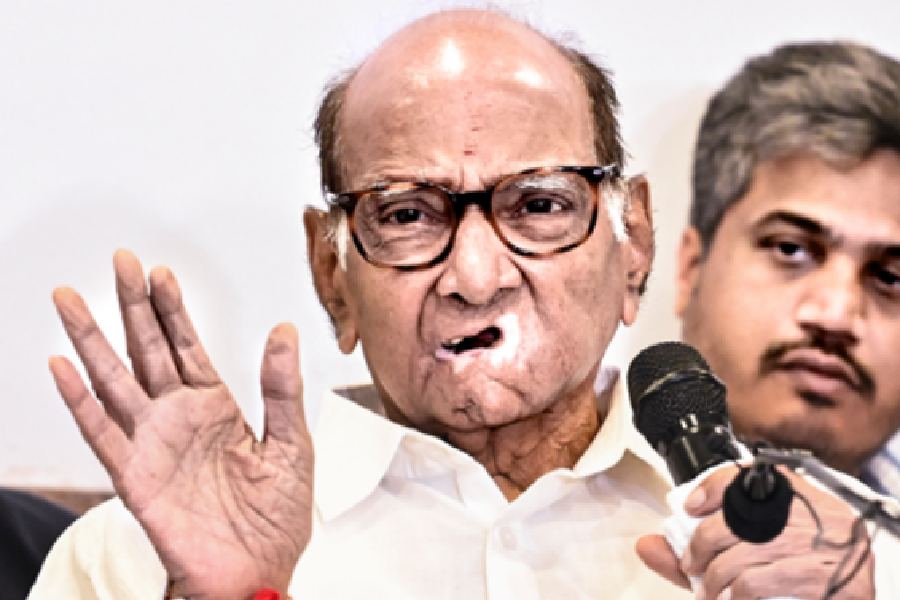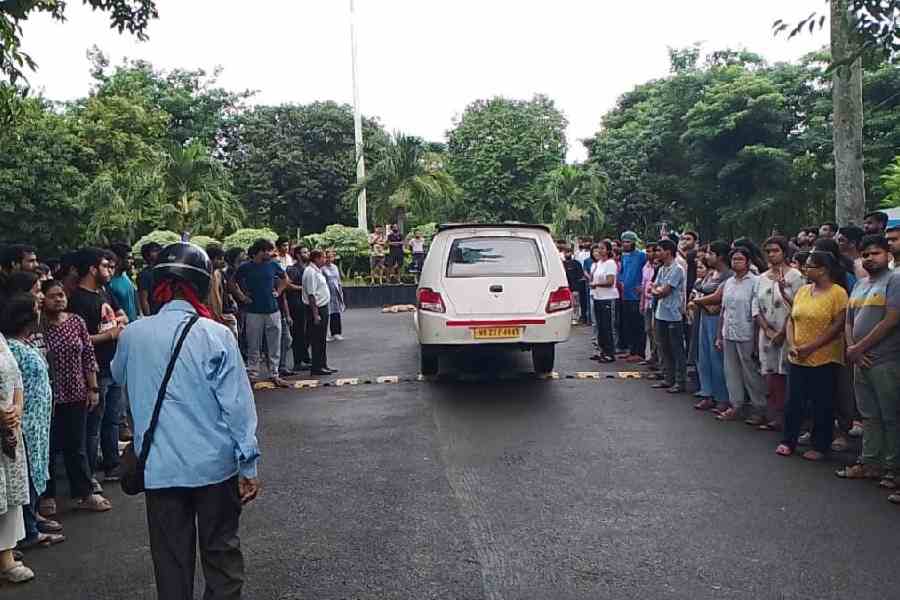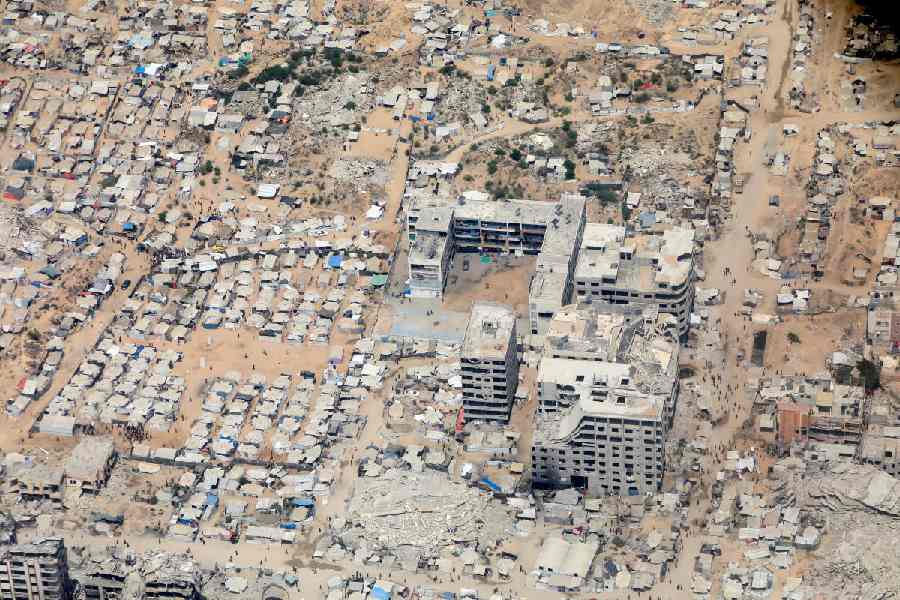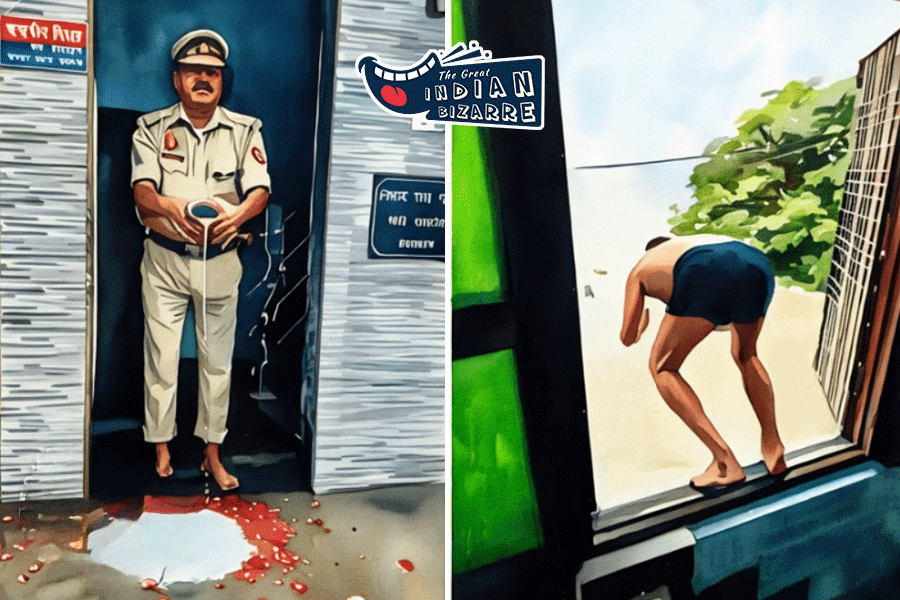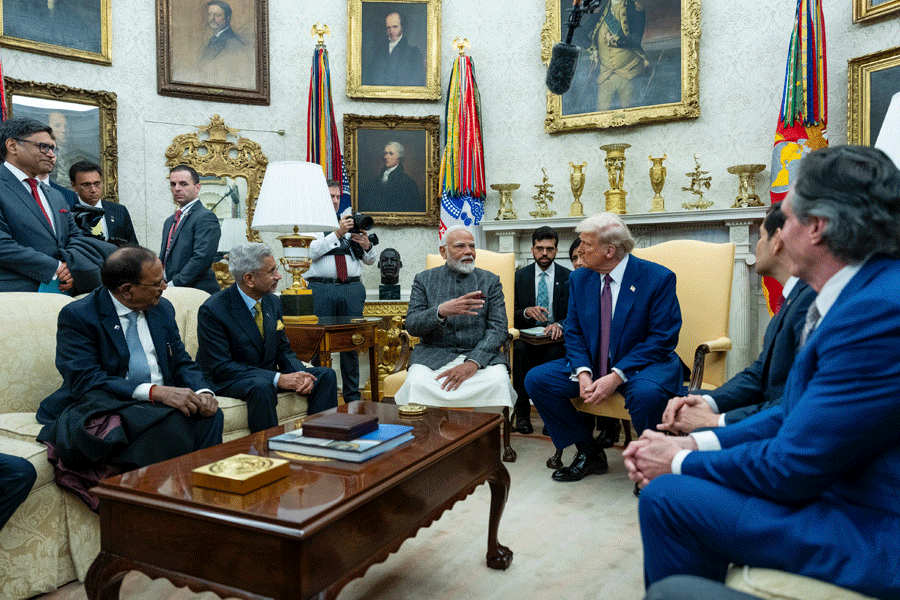 |
 |
| (Top) The painter’s daughter at the hospital where he passed away. His body before the last journey. Pictures by Amit Datta |
Bikash Bhattacharjee, considered one of the leading artists India has produced after Independence, died after prolonged illness in a nursing home at 10.40 am on Monday. He was 66 and is survived by his wife, son and daughter.
Bhattacharjee was admitted to Belle Vue Clinic on November 19 following a massive cardiac arrest. This was the third such attack that ultimately caused his death.
As the news of his death spread, fellow artists, students, friends and admirers gathered at the nursing home to pay their tribute to the artist. Chief minister Buddhadeb Bhattacharjee, Trinamul Congress chief Mamata Banerjee, and businessmen who were his patrons were among the innumerable people who sent their condolences and floral tributes.
“This is a great loss for the citizens of Calcutta. Our Town Hall was renovated with the money gathered by auctioning his paintings of the heroes of the Bengal Renaissance in 1992. He always helped our civic body,” said mayor Bikash Ranjan Bhattacharyya, who visited the Kashi Mitra burning ghat in north Calcutta, where the painter was cremated on Monday evening.
“Bikash was a master of technique. He used oils adroitly,” said artist Ganesh Haloi, who visited the nursing home in the morning. Haloi could not have been more correct. Bhattacharjee will be remembered for the brilliance with which he could transport here-and-now reality to the realms of fantasy through sheer technical bravura. Be it his famous Doll series, where the playthings turn into symbols of the darkness that had enveloped Bengal in the 1960s and the early 1970s, or his protest paintings that mirrored the bloodbath in the wake of police repression of the Naxalite movement, it was through his absolutely credible depiction of the skin of reality that Bhattacharjee touched the irreal.
He leaped beyond reality not by experimenting with form or through abstraction, as he used to early in his career, but through subtle distortions and quirks of features. Little wonder that in certain circles he was referred to as “Bicasso” in an obvious reference to the modern master.
It is one of the ironies of life that although Bikash began his career as an angry young man, after years of struggle when success came his way — it is said that when his career was at his peak, some of his patrons would “book” his paintings long before they were painted — the fire inside him slowly cooled down.
His powerful draughtsmanship and mastery in watercolours, oils, pastel and the pencil remained his hallmark but his works became tamer.
Bikash was brought up in poverty in the Shyampukur area of north Calcutta in 1940. He lost his father at six, when his mother had to seek refuge at her brother’s place.
In his childhood he would visit Sovabazar Rajbati when Durga images used to created by artisans. This and the crumbling palaces of this part of the city built up his sensibility and aesthetics.
He graduated from Indian College of Art and Draftsmanship in 1963. He had scant regard for bohemianism and taught at the Government College of Art and Craft till 1982. He was also a member of the Society of Contemporary Artists. Like the duality in his work — verisimilitude co-existing with the realm of imagination — Bikash had a Left leaning but he was an orthodox at heart.


